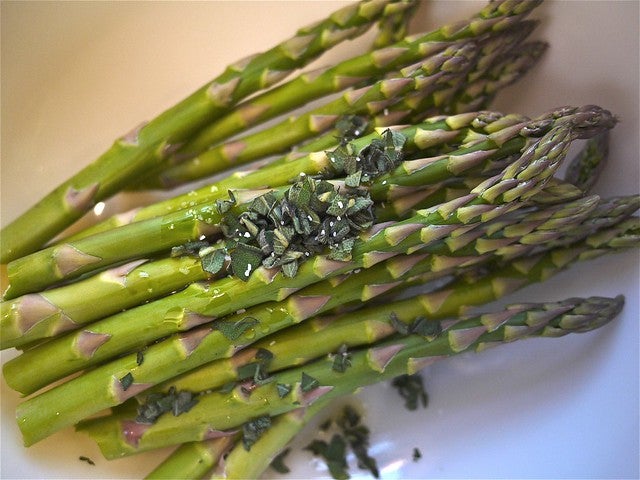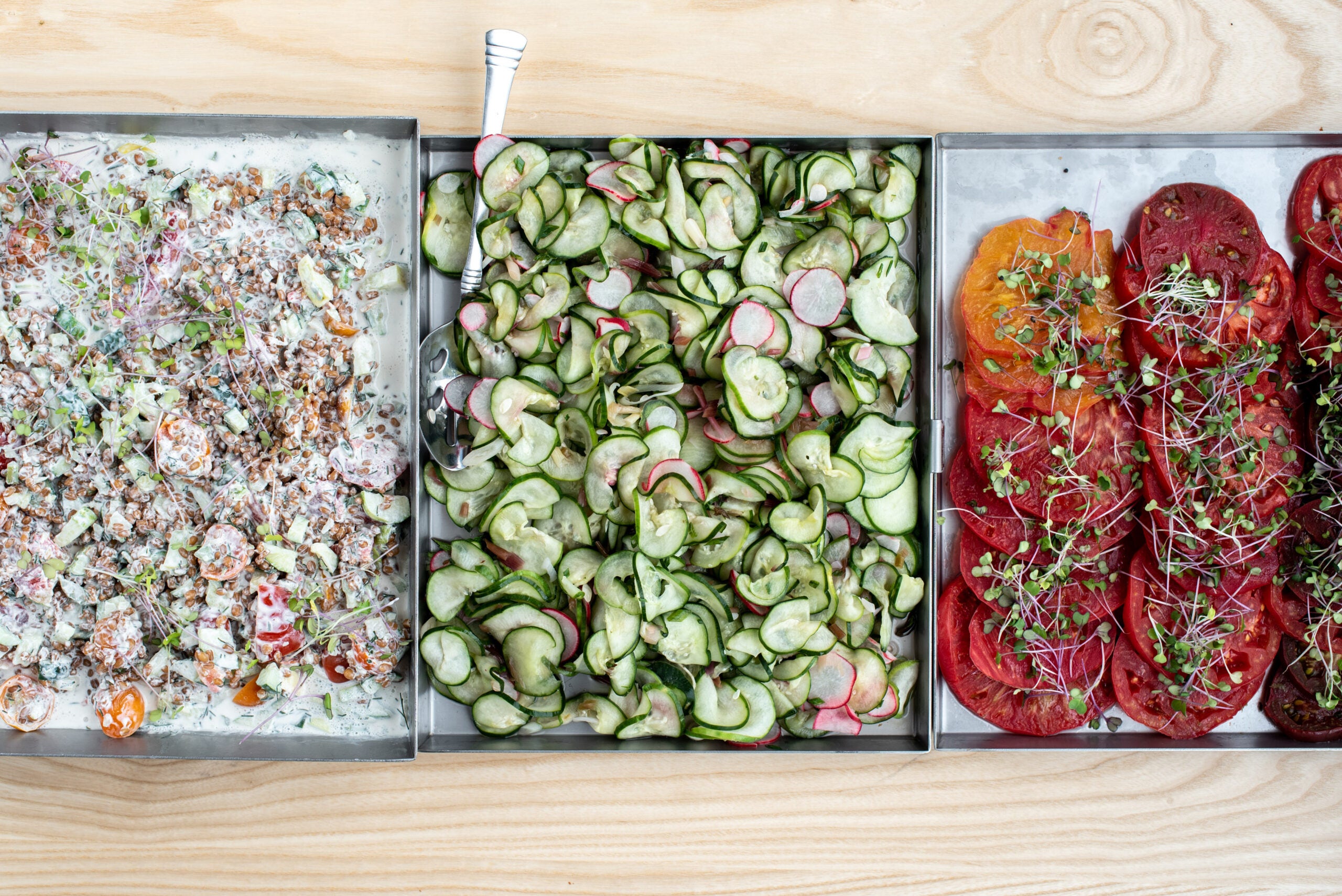To chef and author David Tanis, each new asparagus season is another reason to celebrate.
“That’s part of the nice thing about it,” Tanis said. “It’s only available, really, for a few short weeks. And then there’s next year to look forward to.”
That season is just about to come to a close, and Tanis has a few tips for how to best use those freshly-picked vegetables.
Stay informed on the latest news
Sign up for WPR’s email newsletter.
For one, be careful not to overcook them. There’s nothing sadder than overcooked asparagus, he jested.
“You want it to stay green,” he said. “Once it sort of veers into that olive drab territory, then you’re sort of in trouble. If you’ve ever had canned asparagus, you know what I mean.”
Tanis said when you pick out asparagus at the farmer’s market or grocery store, look for smooth, shiny and firm stalks. Steer clear of ones that looked wrinkled or weathered.
The tips of the asparagus should be tight and not coming apart on top. Check the bottoms. Are they brown? If so, they probably weren’t freshly cut.
“Your best choice is going to be whatever is local,” Tanis said.
Before you cook your asparagus, Tanis said you should snap the stem of the asparagus where the tender part meets the tough part. That way, you’ll get most of the edible stem. You can use a knife, too, but you may end up with a little piece of tough asparagus at the bottom.
Picking out asparagus based on size largely depends on what you’re going to use it for. If you want to make a raw asparagus salad, for example, look for thick stalks. Peel slightly at the bottom to get rid of any tough skin and then slice the asparagus as thin as possible. You can use a vegetable peeler to make this a bit easier.
If you have skinny stalks, you can add those to a salad, too, by cutting the stalks up into short lengths and tossing them in the dish.
“It makes a nice salad — thin ribbons of asparagus just lightly dressed with something tasty, or the chopped can be good too,” he said.
Thicker asparagus is better on the grill, but any variety is fine just so long as it doesn’t fall through the grate.
Tanis said sometimes you can get lucky enough to find wild asparagus. The best way to eat that, in his opinion, is to toss the stalks in boiling water for two minutes and eat them with butter.
Wild asparagus loves the sun and can be found in ditches and along country roads. You might have some luck finding new stalks around last year’s crop that will look like fine, wispy, brown vegetation.
Wisconsin Public Radio, © Copyright 2024, Board of Regents of the University of Wisconsin System and Wisconsin Educational Communications Board.




